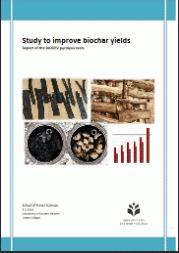Description of the subject. This article describes the effects of the factors “planting date” and “density” on mature boll distribution on the cotton plant and on final yield, focusing on contrasting varieties for habit and earliness. Objectives. This study aims at supporting the rainfed cotton breeding programs in West Africa in their understanding of how two key factors involved in the cropping system modify the establishment of production. Method. Four trials were conducted at two sites in Benin in 2002 and 2003, with six varieties, three crop densities (42,000, 125,000, 167,000 plants·ha-1) and two planting dates (June, July/August) following a split-split plot design. The number of fruiting sites, the retention rate, boll production and distribution, and seed cotton yield were evaluated. Results. When sowing was delayed, there was a reduction in production by the cotton plants, and bolls were concentrated on the first two positions of the first six fruiting branches (BF). High plant densities led to a decrease in the number of sites, the retention rate, and a concentration of more than 50% of production on the first positions of the first four BF. Compared to African-bred varieties (H279-1 and Irma A1042), the early and compact varieties Mar 88-214 and Chaco 520 showed a higher proportion of mature bolls in their lower parts (first positions of first BF), but their average yield was generally lower. Conclusions. Breeding for a high retention rate in the lower part of the plant (RP1-2_BF1-8) can improve performance under controlled cropping conditions or for the least efficient varieties, but the optimum retention rate depends on the cropping system and, more generally, cropping conditions. © 2016, FAC UNIV SCIENCES AGRONOMIQUES GEMBLOUX. All rights reserved.
DOI:
https://doi.org/10.25518/1780-4507.12904
Altmetric score:
Dimensions Citation Count:
























